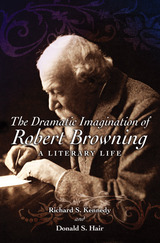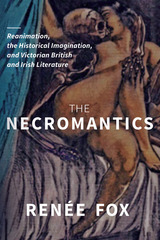

This will stand as the definitive account of Robert Browning's development to maturity as a man and poet. Drawing on all available material, including important new manuscript findings, John Maynard reconstructs the circumstances of Browning's youth—his ancestry, his attractive and eccentric family, life in the new suburban London, his early understanding of himself and the world around him, his rich cultural education at home and with his teachers and friends and gives us a warm and convincing picture of Browning's boyhood and growth. Maynard traces Browning's early efforts to define his role as a poet, providing a full critical interpretation of his relation to the Romantics, especially the peculiarly powerful influence Shelley exerted on his early work.
The development of Browning's mind is examined in his response to his early schooling and private tutoring at home, his year at the new London University, and his decision to drop out of the university and all conventional career plans. The history concludes with a survey of Browning's reading in the period of self-education that initiated his mature work as a major poet of our modern era. Maynard's intention throughout is not to provide a day-to-day account of a boy and young man's life, but to flesh out the larger epic of a gifted child's formation in his environment, and the emergence of his own direction out of the context of his family, society, and literary culture. In so doing he has achieved a model case study of the development of a young man's mind and of a young poet's sense of identity as a creative artist. And he has recaptured the social, physical, and cultural ambiance of middle-class London in the early nineteenth century. It is a story told with grace and critical good sense.


The Necromantics dwells on the literal afterlives of history. Reading the reanimated corpses—monstrous, metaphorical, and occasionally electrified—that Mary Shelley, Robert Browning, Charles Dickens, W. B. Yeats, Bram Stoker, and others bring to life, Renée Fox argues that these undead figures embody the present’s desire to remake the past in its own image. Fox positions “necromantic literature” at a nineteenth-century intersection between sentimental historiography, medical electricity, imperial gothic monsters, and the Irish Literary Revival, contending that these unghostly bodies resist critical assumptions about the always-haunting power of history.
By considering Irish Revival texts within the broader scope of nineteenth-century necromantic works, The Necromantics challenges Victorian studies’ tendency to merge Irish and English national traditions into a single British whole, as well as Irish studies’ postcolonial efforts to cordon off a distinct Irish canon. Fox thus forges new connections between conflicting political, formal, and historical traditions. In doing so, she proposes necromantic literature as a model for a contemporary reparative reading practice that can reanimate nineteenth-century texts with new aesthetic affinities, demonstrating that any effective act of reading will always be an effort of reanimation.
READERS
Browse our collection.
PUBLISHERS
See BiblioVault's publisher services.
STUDENT SERVICES
Files for college accessibility offices.
UChicago Accessibility Resources
home | accessibility | search | about | contact us
BiblioVault ® 2001 - 2024
The University of Chicago Press









